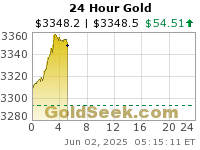Just for a change of pace I'd like to show you some new techniques for using the True Strength Index (TSI) indicator to generate timely BUY and SELL signals. These techniques involve 4 different patterns that the TSI may form before a powerful breakout occurs and prepare you to be on high alert in advance. I call these general patterns 'compression' patterns and as you will see, the TSI indeed can be compressed in such a manner with respect to the movement of price that the change in price trend direction becomes obvious very quickly once the TSI compression is released.
The names I have given to these compression patterns are: wedge, bullish, bearish and ZERO line.
Let's now look at an example of each, beginning with the wedge compression.
This daily chart of the U.S. Dollar Index (DXYO) is a classic example:
 |
| Click on any chart to ENLARGE |
The bearish compression pattern of the TSI is one in which the TSI makes a series of lower highs and lower lows - a descending channel - while price appears to be generally rising.
Like each of the compression patterns, the bearish pattern takes time to develop. However, if one knows to look for this it can be seen some time before it detonates price (which offers a decisive trading advantage).
And finally, let's have a look at the ZERO line compression pattern. This one, somewhat like the wedge pattern, can be either bullish or bearish. But in this case one knows in advance which it is - because it depends whether the TSI is above ZERO and being repelled (eventually bearish) or below ZERO (bullish as in the chart below).
The key point to always try to keep in mind is that as long as the TSI is above ZERO, and especially when it is rising, price is always rising. And just the opposite for when the TSI is below ZERO (as in this chart of GDX).
Well, now you have some new tricks to use when making your next trading decision. Go get 'em!
John
tsiTrader@gmail.com



![[Most Recent Quotes from www.kitco.com]](http://www.kitconet.com/images/quotes_special.gif)




another great post, John! Thanks.
ReplyDeleteMy concern about whether TSI would misbehave on a penny stock has partly to do with the volume. However, this stock's volume seems large enough that that shouldn't be a problem.
The second concern has more to do with who would buy a penny stock. For example, some (most, all?) large hedge fund managers may be prohibited from doing so. If so, then you could be missing the very buyer or group of buyers who are needed to bid a stock up on a breakout or other technical indication that a price advance should occur.
Excellent insights John. Thanks for sharing. Bruce
ReplyDeleteBruce - thanks.
ReplyDeletePimaCanyon - good point about *who* buys penny stocks. I think that post I recently
did about US Silver makes your point very powerfully. I had sold out at $1.20 and
for 15 months thereafter the stock price did nothing but go sideways. Meanwhile, gold
and silver did anything but go sideways. Then out of the blue US Silver took off like a
rocket and climbed from $1 to $4. My hunch is that bigger money looked around and thought
(correctly) to themselves, 'what is this stock doing priced like this?'......and the market
does, eventually, get it right.
Well, for better or worse, I've made my CGR bed and now I will live with it. I continue to
believe that miners that are more levered to the price of gold, that is, they have smaller
profit margins and greater costs to produce an ounce, will significantly outperform the major league
miners. For example, ABX is now $35 and when it returns to its high corresponding to gold's
run at $1900 it reached $55. I think something similar is likely in the upcoming months and
that means ABX could gain $20 from here for a nice 57% gain. But CGR, at current 58 cents would
possibly regain it's old highs too.....which are around $2.50. This would be a gain of 430%.
This will require patience, but that is a tool I am learning to use.
Makes sense, John. 430% is nothing to sneeze at! Here's to CGR returning to $2.50 soon.
ReplyDeleteJohn,
ReplyDeleteDoes today's action invalidate the compression breakouts?
Anon - I would say that today's action does not, per se, invalidate
ReplyDeletethe compression breakouts. But I will tell you that the action of
gold futures this evening - if it continues into tomorrow - may well
cause the breakouts to fail. The acid test for me would be another
TSI signal that says SELL. It could be a TSI ZERO crossover that switches
its current polarity from positive to negative or visa versa, or it could
be a trend line break. For the moment I really do not know what will happen.
I do however continue to believe that gold's Intermediate Cycle trend line
has not been broken and therefore we are still in the first Intermediate Cycle
of the C-wave. Something lower than $1641 would accomplish that 'requirement'.
And an intra day price below $1636 may very well mark the conclusion of this
first Intermediate Cycle.
So I guess I'll just have to watch the show and see which cards turn up.